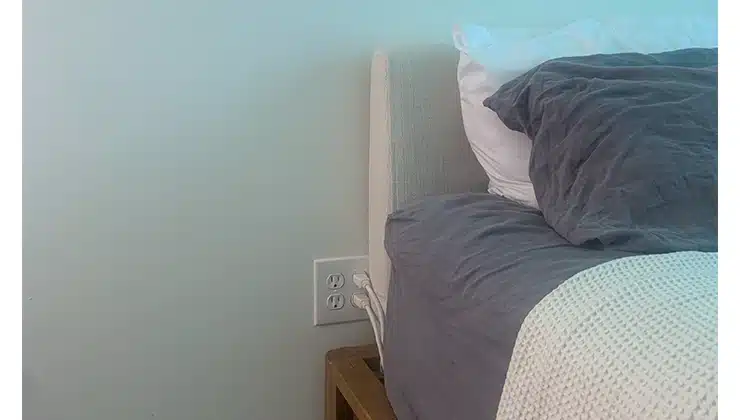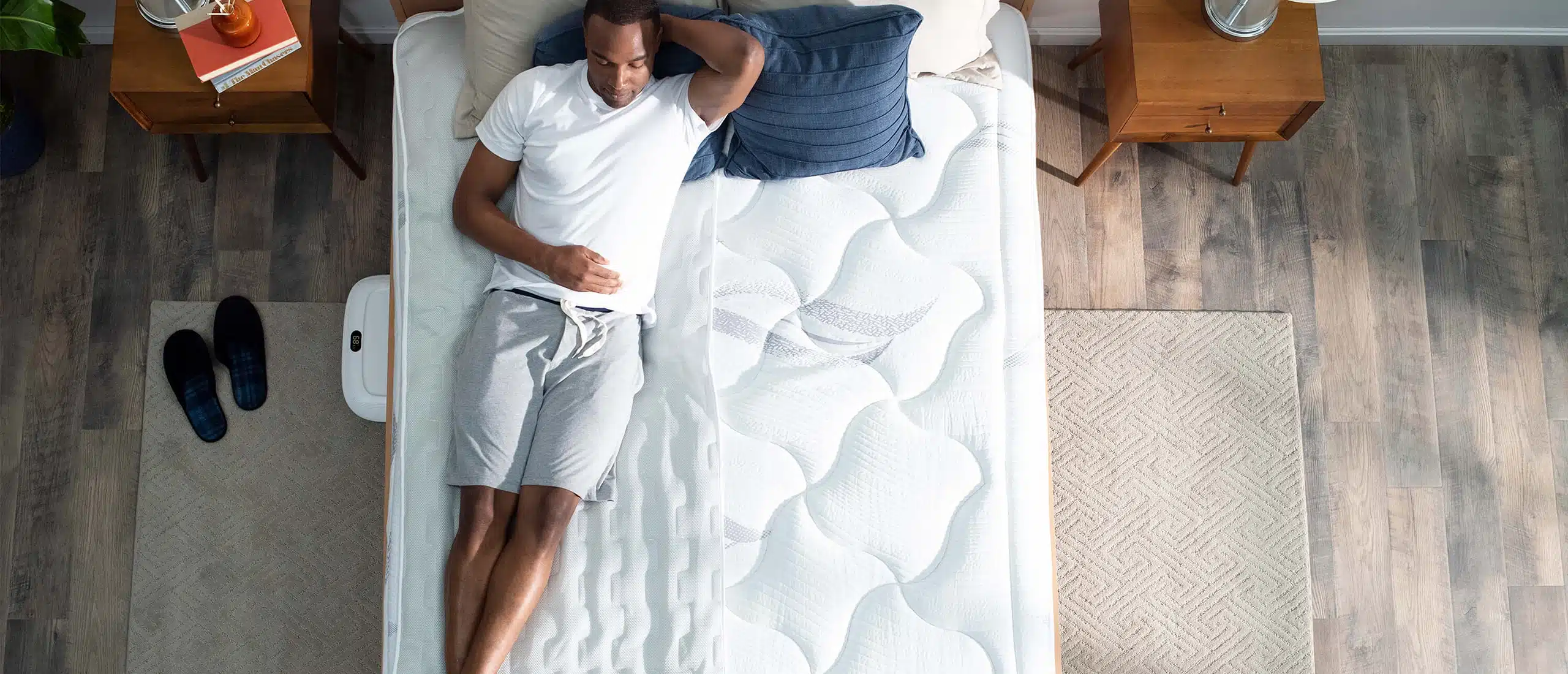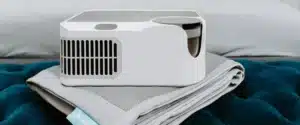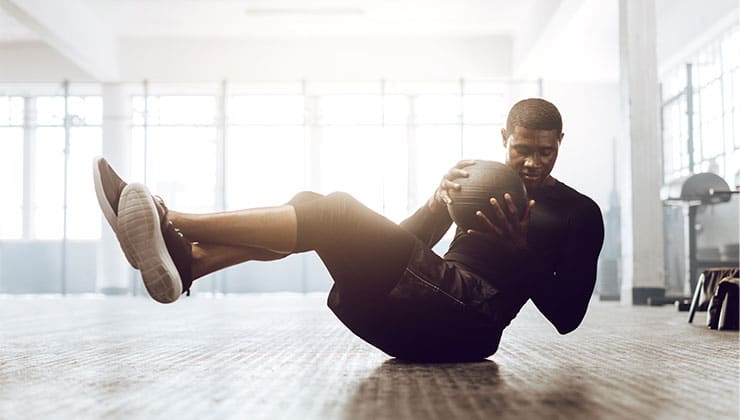How to Not Be a Hot Sleeper: Get a Bed-Cooling System
Being a hot sleeper is like being engaged in a waking nightmare almost every night. Be it a room without proper air flow, soaring outdoor temperatures, booze, or a naturally warm-blooded nature, the reasons you might sleep hot are numerous. You could invest in oscillating fans or crank the A/C, or, if your hot sleeping is becoming a more serious issue, you could take a bigger swing.
The Ooler Sleep System is not a half-measure. It costs $799 at retail for a half-bed’s worth of coverage and it’s probably the most aggressive solution to hot sleeping you can try. It’s one of the most popular bed-cooling systems on the market—rivaled only by Eight Sleep’s Pod and similar products like the Dock Pro. What do you get for all that money? I slept with one for more than a year to find out.
What Is the Ooler, and How Does It Work?
What is the Ooler?
The Ooler is an active, water-based, bed-cooling system from a North Carolina-based brand called Sleepme (which makes another notable bed-cooling system called the Dock Pro). Let’s break down what exactly that means.
How does the Ooler bed-cooling system work?
There are many versions of bed-cooling systems, but the Ooler’s take is probably the most aggressive. There are passive bed-cooling systems, which take the form of mattress toppers and sheets, that regulate temperature through breathable construction like percale cotton, or heat sinking materials like charcoal. Then there are active bed-cooling systems that push cold air through a pad that slips beneath your fitted sheet. These products typically cost significantly more than the passive systems and products due to the technology involved—usually a fan with a small tank of water, a series of hoses, circuitry, and an airy bed pad.
The Ooler is similar, but instead of pushing cold air through a pad you sleep on, it pushes cold water through one. Plugged into an outlet, a water tank with a rubber hose that runs conspicuously into a pad beneath your top sheet sits under your bed. The pad is a thin mesh with a series of veins running through it. The tank under the bed cools the water to your desired temperature and pushes it up into the pad and under you while you rest. It takes give or take 10 to 15 minutes to get rolling. That said, you can simply schedule the Ooler to begin cooling at a set time so the bed is already cool by the time you hop in.

What’s Good About the Ooler Sleep System?
It will cool you down
There’s a lot going on with the Ooler, but after more than a year of sleeping with one, there is one unassailable truth: it’ll cool down your bed.
Though you might read this and say duh to yourself, you might be surprised by how unique this seemingly simple function is. The fact is that cooling mattresses, sheets, mattress toppers, pillows, and all the other passively cooling products you can buy aren’t necessarily cooling you as much as they are ensuring the product isn’t actively holding heat coming from your body and in the room they’re in. For some (maybe most?) sleepers, this is enough; but for chronically warm-blooded people it is simply not.
If I eat too late or I’ve had a couple drinks, I’ll drop my Ooler down to 65 degrees on the mobile app while I brush my teeth and immediately feel relief in knowing I’m unlikely to wake up sweaty. Where other products rely on regulating temperature, the Ooler is forcibly lowering the temperature where your body meets the bed, which is more than almost any other temperature regulation system can claim.
Straightforward setup
Fill up the little what tank, plug it in, and slide it under your bed. Snap one end of the hose into the tank and the other into the cooling pad, then place the cooling pad atop your mattress, before making your bed as you normally would. The Ooler is now functional.
There is a mobile app that’s mostly functional as well, which you can use to schedule run times and turn on the machine before getting in bed, but it’s not necessary for the baseline function of the product. The whole assembly and setup phase took my partner and I probably six or seven minutes.
Extremely simple to use
I’m not sure what I expected, but I thought it may be more difficult to figure out the hows and the whats of the Ooler than it was. You literally just wake it up, type in a temperature, and let it rip. Yes, there are more complex timed on-off settings and different ways you can program the device to slowly wake you up with a subtle temperature shift, but they are secondary features to the most base one: make it so I don’t sweat while I sleep.
What’s Not Good About the Ooler Sleep System?
Very expensive
There is no getting around the price. Though it is available for around 15 to 20 percent off somewhat regularly, you pay $799 for coverage of half a queen-sized bed. A full queen doesn’t afford you a slight discount, either—it’s $1,599. For that kind of money, you could buy a decent mattress.
How does the price compare to other water-based systems like it? Not quite favorably, but not outright bad. Chilisleep sells two other similar products—the Dock Pro ($1,000) and the Cube ($549)—on either side of the price spectrum. Bedjet is another serious competitor (though it uses air to cool you down) and sells for $399 per half-bed coverage.
Ultimately, if you’re at the far end of the hot sleeping spectrum, you’ll likely spare no expense to remedy your problem, but it’s hard to be happy dropping this much money.
Can make bed feel damp
To be clear, the bed is not actually damp, it can just feel that way. The feeling of cold water running beneath you while you sleep takes some getting used to, and if it’s a particularly balmy evening already, don’t be surprised if you catch yourself looking for condensation spots around you (and not finding any). This is an area air-based cooling systems don’t struggle with.
App can be slow or glitchy
Somewhat unsurprisingly, the app is just OK. The scheduling, temperature selection, and various other functions aren’t broken by any means, but they can be inconsistent or finicky.
On a few occasions I set the bed to a cooling cycle before turning in the for the night and the device never turned on. There have been times the schedule shut-off doesn’t activate. Other times, the app is simply very slow.
I say this is all unsurprising because Chilisleep is not principally a software developer, and its app-enabled products are products first and foremost, not lines of code. If I had to bet, I’d wager the app was made by a third-party company and receives limited support in the way of quality of life updates.

The Experience
Getting it up and running
My partner and I received and set up the Ooler more than a year ago now. We went with the full-bed setup because we both knew the other would be jealous of whichever side had the cooling pad.
Setup was straightforward. You fill the tanks (each side of the full-bed pad has its own tank) then plug the tubes into the pad and and each respective tank. The pad sits on top of your mattress, and slip your fitted sheet and other bed dressing on top of it. Then, you plug the tank into the wall and start the Bluetooth connection with your phone and the mobile app. Altogether it took maybe five or so minutes.
Bluetooth (not Wi-Fi) controlled
A quick note on Bluetooth-enabled phone connection: you can control the machine when nearby (basically within your house), but you can’t turn it on from afar. So if you’re on your way home after a long day at work and want to come home to a cool bed, you’ll need to pull in the driveway (or, more realistically, walk in the door) to get it running. The Dock Pro, which we’ve reviewed here, is Wifi-connected, and is controllable from anywhere.
In the time we’ve used it, it’s worked as advertised probably 95 times out of 100. The times it hasn’t are largely the fault of a shaky connection between app, phone, and machine or user error (like forgetting to refill the water tank).
How often do you have to refill the water tank?
The tanks don’t need refilling often—we’ve refilled them twice in more than a year—but it can be slightly annoying because the water reservoirs are attached to the device, so you have to take down the entire thing to refill them. Definitely not a dealbreaker, but a bit of an eye roll from a user experience POV.
How cold does the Ooler get?
I’m a relatively hot sleeper and my partner is a very hot sleeper. If you buy the full-bed setup, each side can choose their own temperature (the range is 55 to 115 degrees). I only run mine when the weather is particularly sticky or I’ve had a few beers and my body is running hot, but my partner runs their side every night no matter the temperature. Generally, mid-60s is as low as I find necessary, but my partner will go to mid-50s to get to sleep.
The water tanks and motors inside them do run a little louder depending how low (or high) you set the temperature, though in my experience it was more relaxing than frustrating. It operates a bit like a semi-quiet white noise machine when on. I’ve become accustomed to it.
Hone’s at-home testosterone assessment is the simplest way to uncover whether your levels are low. If you qualify for treatment, TRT can be sent right to your door.
The Competition
Competition is as low-cost as a fan for your bedroom, but if you’re reading a story about a bed-cooling system, you’re likely more interested in a more deterministic approach to keeping yourself cool.
Our review team really dug Eight Sleep’s Pod Pro ($2,295) cooling system—with our tester writing that it “completely eliminated hot sleeping.” But it does cost nearly $2,500, which is obviously a huge investment.
Chilisleep’s Dock Pro ($1,000) is more or less an upgraded Ooler. It features everything the Ooler does and throws in Wifi-connectivity and a removable water reservoir, plus it cools more quickly while making less noise.
The Cube ($549), also made by Chilisleep, is the brand’s budget option. You can’t control it by phone and it’s a bit clunkier than the Ooler or Dock Pro, but it is a fair bit cheaper.
Then there’s Bedjet, another serious competitor that uses air to cool you down rather than water, and sells for $399 per half-bed coverage. Generally speaking, water-based systems will be more expensive but marginally better at keeping a surface cold.












